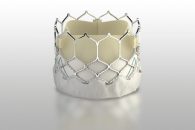In some patients, using an anticoagulant agent is not an option, it is just prescribed. Based on the French TAVR registry, this research compared long-term mortality, bleeding, and ischemic events after valve implantation. A comparison was made between TAVR and direct vs. classic anticoagulant agents—good old proven and reversible vitamin K inhibitors. Cardiologists, hematologists, clinicians, and…
SOLVE-TAVI after 12-month followup: self-expanding vs. balloon expandable and general vs. local anesthesia
The ambitious SOLVE-TAVI (soon to be published in JACC) is aimed at answering to of the most important questions we make when facing a TAVR procedure: What valve do we choose, a self-expanding or a balloon expandable? And once we have chosen our device, do we proceed with general anesthesia or conscious sedation? The…
Risk of Coronary Obstruction in Repeat TAVR
As we gradually consolidate the information on the duration of transcatheter aortic valve replacement (TAVR) the focus seems to be moving towards the feasibility of repeat TAVR. How long the valve will last no longer matters as much as how feasible a new procedure is. The supra-annular leaflet position and tall stent frame of the…
NT-proBNP Level Predicts Who May Benefit From TAVR
A normal or (on the other end) a very high level of NT-proBNP should make us look for a cause other than aortic stenosis. If aortic stenosis is not the culprit of the clinical case, a transcatheter aortic valve replacement (TAVR) will hardly benefit these patients. These data come from a recently published paper in…
Sapien 3 Performs Well in “Jobs” for Which It Is Not Designed
Using Sapien 3, transcatheter mitral valve replacement to treat failed bioprosthetic valves can be performed with a high degree of technical success. Failed mitral bioprosthetic valves are truly challenging due to how frequent symptoms are and the high morbidity/mortality associated with a new surgical replacement. Furthermore, there are no catheter options specifically designed to treat this…
TAVR Long-Term Durability: from the Cath Lab to Real Life
Nominally deployed transcatheter heart valves SAPIEN 3 has shown excellent durability in accelerated testing to an equivalent 25 year-wear. S3 durability resulted comparable to surgical biological valve durability. Non-nominal implants (overexpansion, underexpansion, and elliptical) also showed excellent durability to an equivalent 5 year-wear. The aim of this study was to test nominally deployed S3 durability to 1 billion…
TAVR in Small Annuli: Is There a Better Valve?
Transcatheter aortic valve replacement with the self-expandable valves has shown optimal clinical and electrocardiographic results in patients with small annuli. These supra-annular prosthetic valves seem somewhat better than the intra-annular balloon expandable. TAVR in general has better functional results in terms of patient/prosthesis mismatch. This seems especially true for patients with a small annulus. The…
TAVR: Should Transradial Approach be the Second Access Site?
Courtesy of Dr. Carlos Fava. One of the major challenges we interventional cardiologists still face is access management. Reduced device diameter and improved transcatheter closure, together with increased operator experience, have significantly reduced vascular complications. However, we shouldn’t lose sight of the secondary access, usually transfemoral, generally used in case of primary access site related…
Is Hybrid Operating Room Necessary for Safe TAVR
According to this sub-study of the FRANCE TAVI registry, mortality is similar for transcatheter aortic valve replacement in hybrid operating rooms vs. conventional catheterization labs. These findings support performing TAVR in conventional cath labs, which goes hand in hand with TAVR expansion, with improved logistics and organization costs. This study compared outcomes of patients undergoing…
We Must Still Fear the “Big Five Complications” After TAVR
Surgical risk scores cannot be used for transcatheter aortic valve replacement (TAVR) and they usually overestimate procedural risk. There are 5 big complications after TAVR, specifically, that cannot be predicted by conventional surgical scores. These 5 peri-procedural complications are considered important because they have a somewhat significant impact on survival after TAVR. They are: 1)…
- 1
- 2









